Self-care intravenous therapy combined with OPAT

Kavita Bhavan, M.D., medical director of the Infectious Diseases Outpatient Parenteral Antimicrobial Therapy [OPAT] Clinic at Parkland, says the clinic treats many patients who need intravenous antimicrobial therapy for several weeks to recover from serious infections stemming from illness or injury” Butcher (2018). Abstract: When leaders at Parkland Health & Hospital System in Dallas launched […]
Central venous access and pacemaker interference

We report the case of an 84-year-old male with history of permanent pacemaker placement that interfered with catheter placement in the contralateral central circulation” Studer and Lucero (2018). Abstract: Central venous access is often required in resuscitation of the critically ill or injured. Permanent pacemaker placement has been associated with stenosis of the ipsilateral central […]
Management of CVC associated inadvertent carotid cannulation
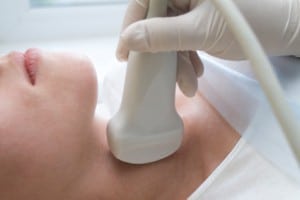
We report 2 cases-a 59-year-old Hispanic man and an 86-year-old white man-of inadvertent placement of a CVC into the left common carotid artery, removed via a pull-and-pressure technique under real-time ultrasound guidance” Libricz et al (2018). Abstract INTRODUCTION: Despite ultrasound use, accidental carotid cannulation is possible during placement of a central venous catheter (CVC), requiring […]
Inferior vena cava diameter as a guide in hypotensive patients for IV therapy

Our aim is to find the correlation and sensitivity of inferior vena cava (IVC) diameter measured by ultrasound to provide a noninvasive method for evaluation of IV among patients with hypotension and hypovolemia in the emergency department (ED)” Chardoli et al (2018). Abstract: BACKGROUND: Knowledge of intravascular volume (IV) status of a hypotensive patient is […]
HAI and colonization in a Vietnamese intensive care unit

The vascular catheterization (central venous, arterial and hemofiltration catheter) was significantly associated with hospital-acquired bloodstream infection” Thuy et al (2018). Abstract: Data concerning intensive care unit (ICU)-acquired bacterial colonization and infections are scarce from low and middle-income countries (LMICs). ICU patients in these settings are at high risk of becoming colonized and infected with antimicrobial-resistant […]
Midline insertion program can decrease hospital-acquired CLABSI

We recommend hospitals to develop a midline program to help reduce the use of central line catheters when possible to reduce the total number of catheter-days and the CLABSI rate associated with them” Pathak et al (2018). Abstract: BACKGROUND: We propose that substituting central lines with midlines can help reduce the total number of central […]
Massive air embolism while removing a central venous catheter

We experienced the case of a 61-year-old male who suffered from a paradoxical systemic air embolism while we removed a CVC” Seong et al (2018). Abstract: Air embolism is a rare but mostly iatrogenic complication of medical or surgical procedures and may have a serious outcome. On the removal of a central venous catheter (CVC), […]
PICC-associated infection with Escherichia hermannii

Our report discusses a case of bacteremia with Escherichia hermannii identified by Matrix-assisted laser desorption/ionization-time of flight (MALDI-TOF) and RapID™ ONE analysis in a patient getting TPN through a peripherally-inserted CVC (PICC)” Sedlock et al (2018). Abstract: Since its identification as a unique species in 1982, Escherichia hermannii has been implicated as a pathogenic organism […]
Cost of vascular access devices in public hospitals in Queensland

The aim of this study was to quantify the utilisation of vascular access devices in Queensland public hospitals and their associated cost” Tuffaha et al (2018). Abstract: Objective: The aim of this study was to quantify the utilisation of vascular access devices in Queensland public hospitals and their associated cost. Methods: Devices were broadly classified […]
Vascular access and medical devices for transfusion therapy
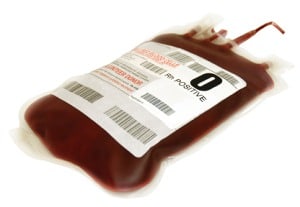
Treatment by blood transfusion first requires an intravenous cannula. Professionals remember the optimal diameter for transfusion (16 to 18G). Practices differ according to the department concerned. Neonatology and paediatric wards use precision filters and put in fine cannulas (24G) with the constraint that this restricts transfusion flow rate” Basset et al (2018). Abstract: Treatment by […]
Clinical impact of the Sherlock 3CG® Tip Confirmation System for PICC placement

PICC placement using the Sherlock 3CG® TCS yielded a high technical success rate and low catheter tip malposition rate regardless of the radiologist’s level of experience or side of insertion” Yamagishi et al (2018). Abstract: Objective: This study was performed to evaluate the technical success rate and catheter tip malposition rate of peripherally inserted central […]
Peripheral intravenous cannula fracture case report
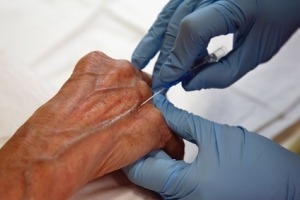
We present a case of broken peripheral intravenous catheter/cannula (PIVC), a well-known, underreported complication of PIVC placement. The fractured cannula could have resulted in intravascular foreign body retention, which is usually iatrogenic” Khoo et al (2018). Abstract: INTRODUCTION: We present a case of broken peripheral intravenous catheter/cannula (PIVC), a well-known, underreported complication of PIVC placement. […]
Effects of thermomechanical stimulation during intravenous catheter insertion

This was an open-label, randomized clinical trial comparing the effects of thermomechanical stimulation (Buzzy) versus no intervention in 105 adults undergoing intravenous (IV) catheter insertion before elective orthopedic surgical procedures” Randomized et al (2018). Abstract: This was an open-label, randomized clinical trial comparing the effects of thermomechanical stimulation (Buzzy) versus no intervention in 105 adults […]
Management of central vascular access devices and guideline compliance

Since 2009, the Department of Continuing Education at the Orthopedic and Trauma Center Hospital in Turin, Italy, has provided a training course for nurses in the management of central vascular access devices (CVADs). The course focuses on dressing and flushing procedures, as well as compliance with other CVAD guidelines” Abstract: Since 2009, the Department of […]
Infusion pump nuisance alarms are disruptive to patient care

The findings of an infusion pump alarm survey indicated that nurses overwhelmingly agree that infusion pump nuisance alarms occur frequently and disrupt patient care” Vitoux et al (2018). Abstract: Between 1983 and 2011, equipment-related alarms in critical care have increased from 6 to 40 different alarm types. As nurses become overwhelmed, distracted, or desensitized by […]
Magnetic tracking with ecg PICC tip visualisation and confirmation

The purpose of this study was to investigate whether a magnetic tracking and electrocardiogram-based tip confirmation system (TCS) (Sherlock 3CG Tip Confirmation System; Bard, Covington, GA) permits safe and correct placement of a peripherally inserted central catheter (PICC) in the pediatric population” Rosche and Stehr (2018). Abstract: The purpose of this study was to investigate […]
Management of peripheral intravenous catheters with new guidelines

This quality improvement project aims to proactively remove PIVCs as soon as possible by empowering nurses and providers to clinically evaluate the necessity of every PIVC on a daily basis on a general hospital medical unit” Loudermilk et al (2018). Abstract: Peripheral intravenous catheters (PIVCs) are common devices used across many healthcare settings. This quality […]
Needlestick injury prevention systematic literature review
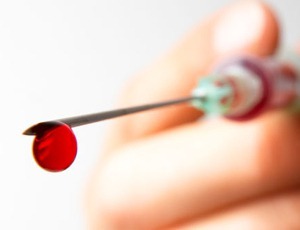
This systematised review was undertaken to appraise research on the effects of training and the use of needle-safety devices (NSDs) on the prevention of needlestick injuries (NSIs) among health workers, focusing on a European perspective” Aziz (2018). Abstract: This systematised review was undertaken to appraise research on the effects of training and the use of […]
Certified Child Life Specialist intervention on pediatric pain during peripheral IV line placement

<h2 class=”modern-quote pull alignleft”>This study evaluated the effects of Certified Child Life Specialist (CCLS) intervention on pediatric distress and pain and family satisfaction during routine peripheral intravenous (PIV) line placement in the emergency department (ED)” Sanchez Cristal et al (2018).</h2> Abstract: This study evaluated the effects of Certified Child Life Specialist (CCLS) intervention on pediatric […]
Vancomycin-induced red man syndrome presentation in a preterm infant

Given the wide use of vancomycin for the treatment of neonatal infections, a good awareness of red man syndrome signs and symptoms in the neonatal population is fundamental to recognize this adverse drug reaction and manage its rare but possible life-threatening complications” Martini et al (2018). Abstract: A male infant born at 32 weeks’ gestation […]
Underreported needlestick injuries among healthcare workers

Needlestick injuries (NSIs) among healthcare workers (HCWs) pose an important health challenge and several pieces of evidence show that in many cases HCWs do not report the injury” Joukar et al (2018). Abstract: BACKGROUND: Needlestick injuries (NSIs) among healthcare workers (HCWs) pose an important health challenge and several pieces of evidence show that in many […]
Propofol infusion syndrome is prevented with a prospective screening protocol

Propofol infusion syndrome (PIS) is a potentially lethal complication of propofol marked by rhabdomyolysis, metabolic acidosis, and cardiac arrhythmias or collapse. The objective of this study was to determine the effectiveness of a prospective screening protocol to prevent PIS” Schroeppel et al (2018). Abstract: Propofol infusion syndrome (PIS) is a potentially lethal complication of propofol […]
IV Furosemide administration options – continuous infusion versus intermittent boluses
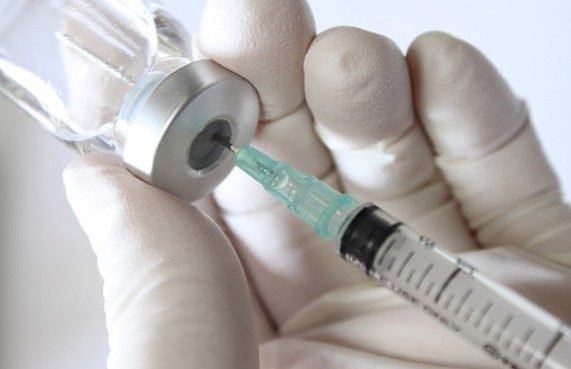
The administration of loop diuretics in the management of acute decompensated heart failure (ADHF) whether IV boluses or continuous infusion is still controversial. We intended to evaluate differences between the two administration routes on the thoracic fluid content (TFC) and the renal functions” Ragab et al (2018). Abstract: INTRODUCTION: The administration of loop diuretics in […]
Thromboembolism prophylaxis in high-risk critically ill patients

This review discusses observational studies identifying patients at risk of thromboprophylaxis failure and critiques clinical studies evaluating novel thromboprophylaxis strategies in high-risk, critically ill patients with a focus on their limitations” Lewis et al (2018). Abstract: Venous thromboembolism (VTE) is a major health concern associated with significant morbidity and mortality. Critically ill patients are at […]
Vessel health and preservation framework evaluation

Vascular access is an important part of many patient care management plans, but has unwanted risks. A working group led by the Infection Prevention Society (IPS) produced a Vessel Health and Preservation (VHP) Framework” Burnett et al (2018). Abstract: BACKGROUND: Vascular access is an important part of many patient care management plans, but has unwanted […]
Extensive overview of central venous access device complications

Central venous catheterization is a skill frequently needed in the acute care setting. Patients who have multiple, noncompatible intravenous (IV) medications with limited peripheral access, or who are being given vasoactive or phlebosclerotic agents may not be suitably cared for with a peripheral IV alone” England and Bhimji (2018). Excerpt: Central venous catheterization is a […]
Pancreatitis treatment options explored in this publication

Acute triglyceride (TG) lowering therapy is crucial in the early treatment of hypertriglyceridemia (HTG)-induced pancreatitis. Data concerning continuous intravenous infusion of insulin and heparin therapy (IHT) as an equivalent option to plasma exchange (PE) in HTG-induced pancreatitis are limited” Jin et al (2018). Abstract: BACKGROUND: Acute triglyceride (TG) lowering therapy is crucial in the early […]
Recidivism in intravenous drug users with infective endocarditis

IVDU patients who underwent cardiac surgery for IE experienced higher risks of perioperative adverse events and inferior mid-term survival compared to non-IVDU, despite being younger and having less comorbidities” Tiako et al (2018). Abstract: BACKGROUND: The proportional incidence of intravenous drug use (IVDU) associated infective endocarditis cases requiring surgery has increased significantly, mirroring the national […]
Central venous pressure is a measure of pressure in the superior vena cava
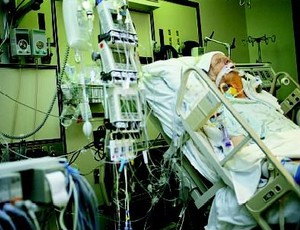
Central venous pressure is a measure of pressure in the superior vena cava which can be used as an estimation of preload and right atrial pressure” Shah and Louis (2018). Excerpt: Central venous pressure is a measure of pressure in the superior vena cava which can be used as an estimation of preload and right […]
Peripheral parenteral nutrition osmolality algorithm

Osmotic stress is a physical risk factor for adverse events related to peripheral parenteral nutrition (PN) administration, such as infiltration. We sought to improve prediction of compounded PN osmolality utilizing basic nutrient solutions available to North American neonatal intensive care units” Borenstein et al (2018). Abstract: BACKGROUND: Osmotic stress is a physical risk factor for […]

